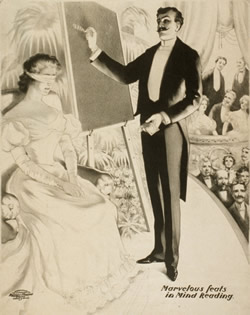 Content creation feels like it should be a purely creative process -- you pull ideas from the air and work inside your head before releasing the product into the world with a flourish. Voilà!
Content creation feels like it should be a purely creative process -- you pull ideas from the air and work inside your head before releasing the product into the world with a flourish. Voilà!
Then you hope that your ideas and the needs of your users match.
You can do better than hope you meet your users’ needs. You can use data to help shape your content strategy. That’s right -- cold, hard data. Data give you insight into what your users are looking for, what they are finding, and even what they may want more of.
You can use this information to create compelling content and hone your content maintenance plan. Let’s look at three data sources you can use in content strategy: analytics, search logs, and user feedback. There are more, but these three are key.
Analytics
Use your site metrics to help with updating and pruning your content. If a page is visited regularly, you may need to update it more regularly than other pages. If incorrect information on a page is bad, then incorrect information on a popular page is worse.
Also consider axing pages that don’t receive many views. As we add fresh content to sites, older pages may no longer be relevant to users or to the business. Removing the content from the site means that’s one less piece you have to maintain.
Search logs
Search provides two sources of data: what people searched for on external search engines that led them to your site, and what they searched for once at your site.
An entire industry focuses on external searchundefinedit’s called search engine optimization and it focuses on getting people to your site. It should be a part of your content strategy in conjunction with marketing.
What about those that are already on your site? You can make sure they have a better experience by looking at what they are searching for on your site. I like to look at the top 50 searches and actually perform those searches each month to make sure the best pages for those terms are at the top of the results.
If they aren’t, I tweak the page content to make it more relevant. And if no page exists, then I know what content I’m creating next.
User feedback
Users can provide more direct feedback. Comments, surveys, and user testing all give users a voice that you can listen to and adjust your content accordingly.
Comments come in various forms these days, from likes on Facebook to questions posted on a blog. You can delve into this feedback to better understand content your users want and the question they tend to have.
Where comments are often a side effect of content, surveys offer a directed feedback mechanismundefinedthe intent of a content survey is to learn how users think you’re doing and what they’d like to see more of. These tools can be great for planning new content.
And you can’t beat the brutal honesty of user testing for raw feedback. From labels to words on the page, you’ll hear it directly when things don’t make sense to a user. The key is making changes that improve the user experience.
Make Data a Part of a Larger Strategy
Data alone doesn’t make for a content strategy, but it should play a large role. I like data because it’s hard to argue with numbers.
Dan Ariely, a professor of psychology at Duke, recently tweeted: "If we have data, let’s look at data. If all we have are opinions, let’s go with mine." I think that sums up why data should be a part of your content strategy.
When you need to make a case, point to the data. It may not be as exciting as creating from thin air, but it’s hard to argue against.

Michael Gowan is a content strategist, writer, and editor based in Carrboro, North Carolina. His skills for content prophecy are available for hire. Follow him on Twitter @zebgowan.